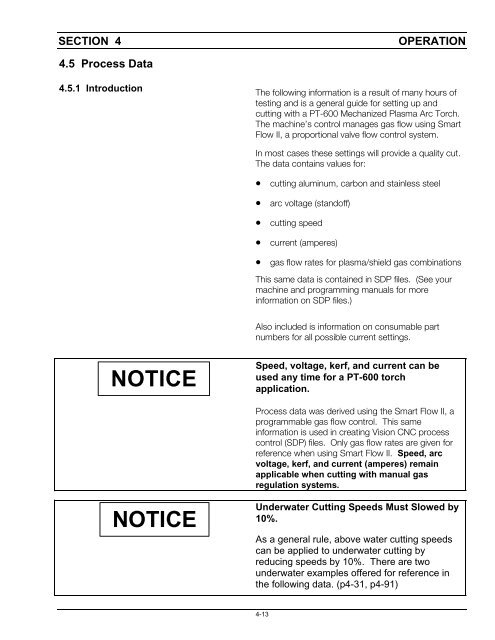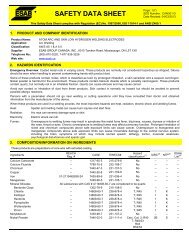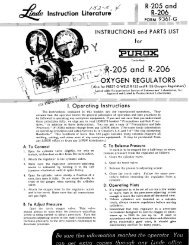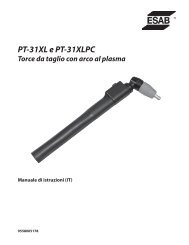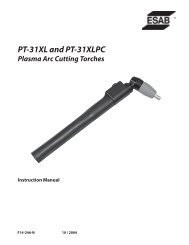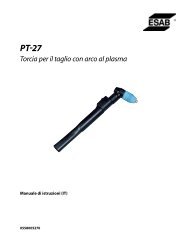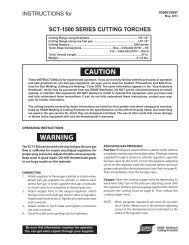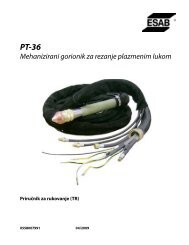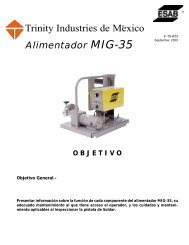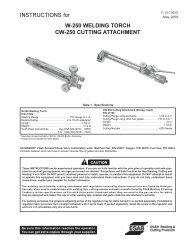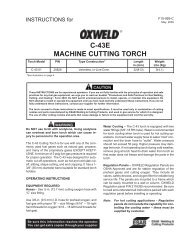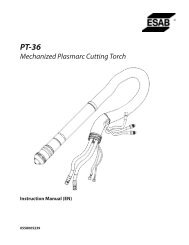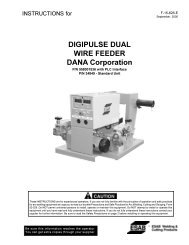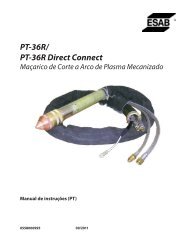PT-600 Mechanized Plasma Cutting Torch
PT-600 Mechanized Plasma Cutting Torch
PT-600 Mechanized Plasma Cutting Torch
Create successful ePaper yourself
Turn your PDF publications into a flip-book with our unique Google optimized e-Paper software.
SECTION 4<br />
OPERATION<br />
4.5 Process Data<br />
4.5.1 Introduction<br />
The following information is a result of many hours of<br />
testing and is a general guide for setting up and<br />
cutting with a <strong>PT</strong>-<strong>600</strong> <strong>Mechanized</strong> <strong>Plasma</strong> Arc <strong>Torch</strong>.<br />
The machine’s control manages gas flow using Smart<br />
Flow II, a proportional valve flow control system.<br />
In most cases these settings will provide a quality cut.<br />
The data contains values for:<br />
cutting aluminum, carbon and stainless steel<br />
arc voltage (standoff)<br />
cutting speed<br />
current (amperes)<br />
gas flow rates for plasma/shield gas combinations<br />
This same data is contained in SDP files. (See your<br />
machine and programming manuals for more<br />
information on SDP files.)<br />
Also included is information on consumable part<br />
numbers for all possible current settings.<br />
NOTICE<br />
Speed, voltage, kerf, and current can be<br />
used any time for a <strong>PT</strong>-<strong>600</strong> torch<br />
application.<br />
Process data was derived using the Smart Flow II, a<br />
programmable gas flow control. This same<br />
information is used in creating Vision CNC process<br />
control (SDP) files. Only gas flow rates are given for<br />
reference when using Smart Flow II. Speed, arc<br />
voltage, kerf, and current (amperes) remain<br />
applicable when cutting with manual gas<br />
regulation systems.<br />
NOTICE<br />
Underwater <strong>Cutting</strong> Speeds Must Slowed by<br />
10%.<br />
As a general rule, above water cutting speeds<br />
can be applied to underwater cutting by<br />
reducing speeds by 10%. There are two<br />
underwater examples offered for reference in<br />
the following data. (p4-31, p4-91)<br />
4-13


